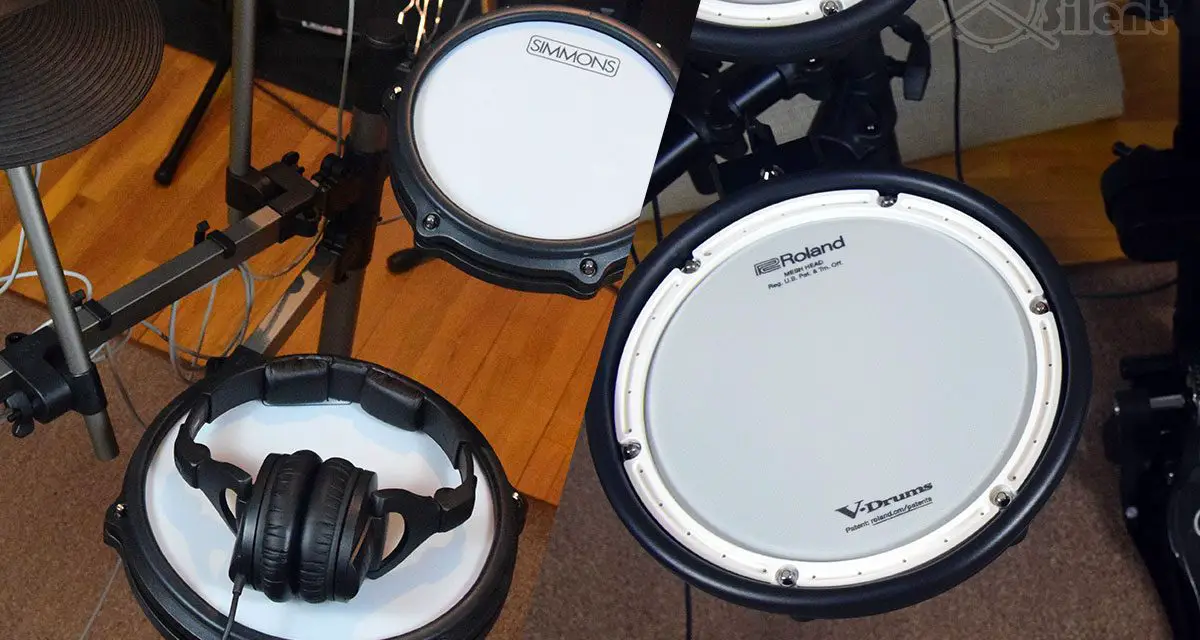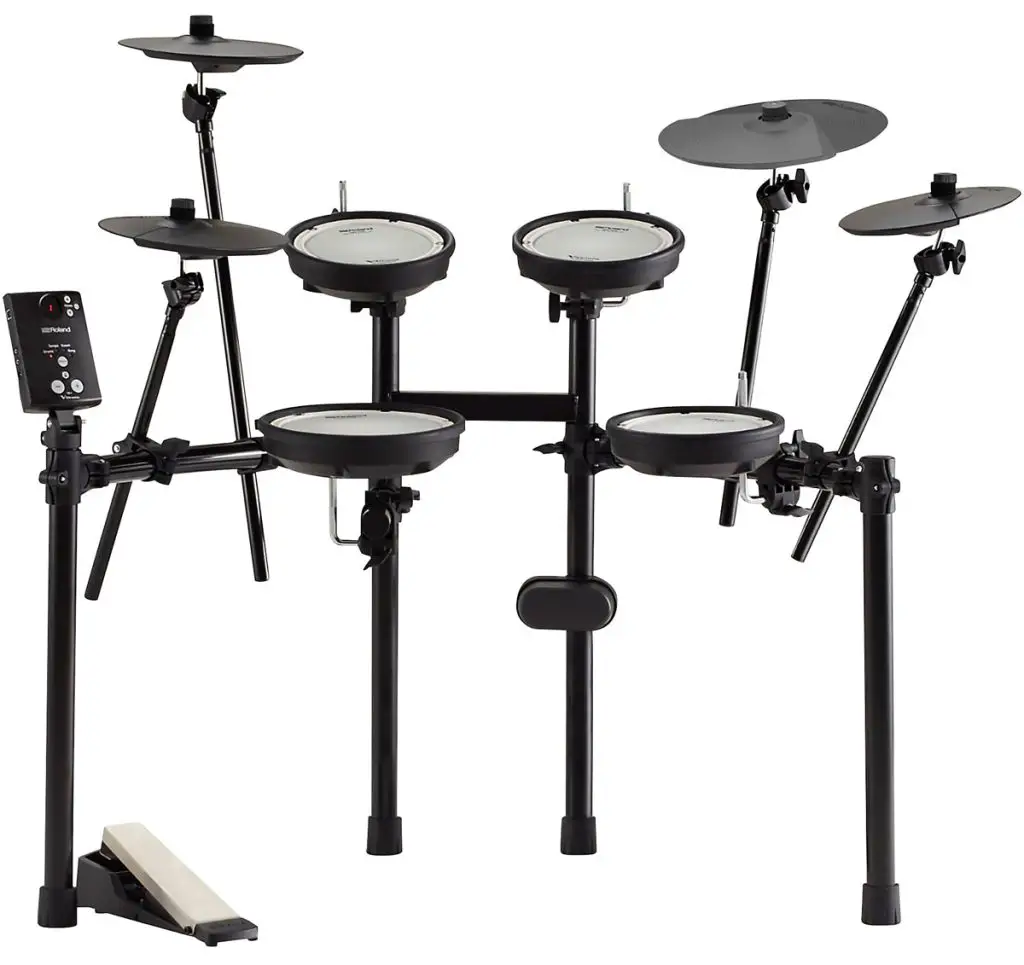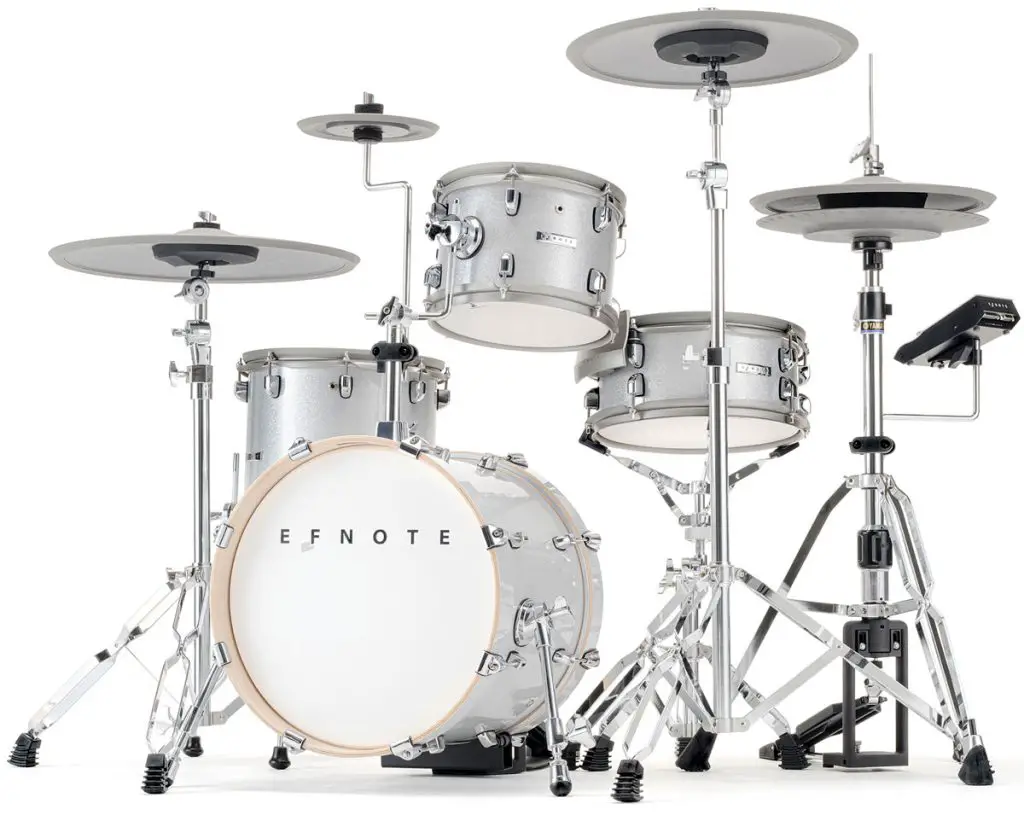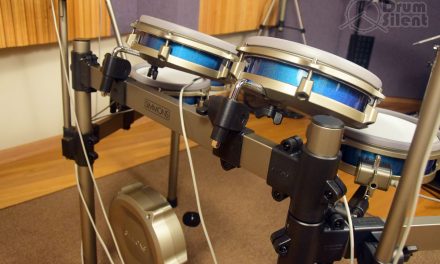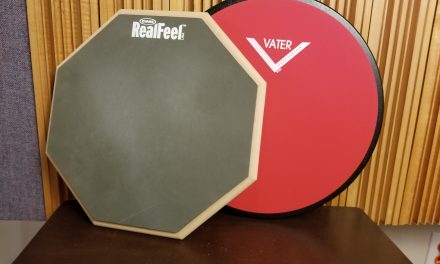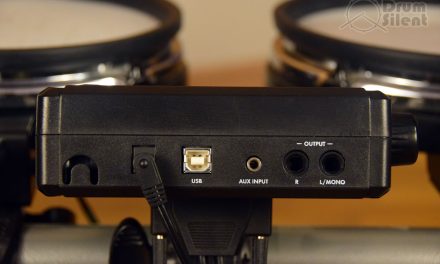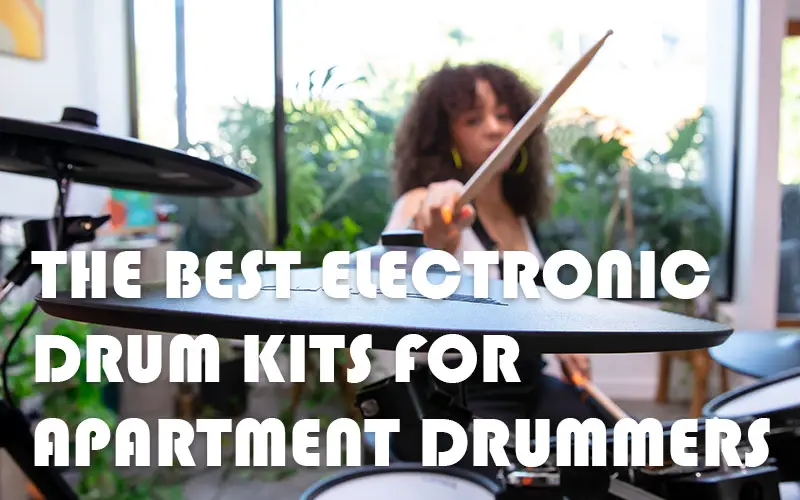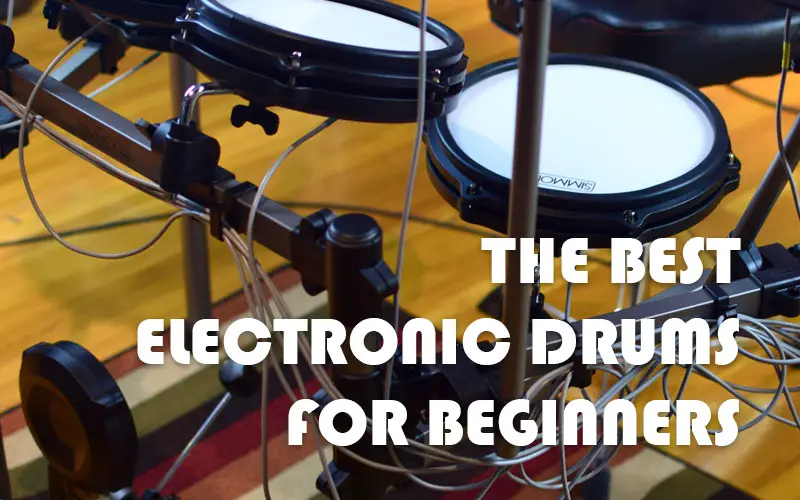Buying an electronic drum kit can be a little intimidating if you’re not sure what’s on the market or you’re not sure what features to be on the lookout for. Here’s what you’ll want to know if you’re new to electronic drums before buying.
What Do You Need to Know Before Buying an Electronic Drum Set?
Here’s what we think you should focus on before making a buying decision. Familiarizing yourself with these topics will help you determine which drum kit will best match your needs.
Setting Your Budget
It can be a little tricky to set a budget for electronic drums. If you have a hard budget number in mind, that’s a good place to start. If you’re still trying to figure out how much you want to spend we can help you narrow it down a bit. For less than $500 you can find playable budget kits. For less than $1000 you can find more advanced budget kits that are still affordable but with more features. For less than $2000 you can find more advanced intermediate level kits with more pads, more trigger zones and better sound modules. If you want to spend more than $2000 you will be able to get closer to pro level kits.
You’ll also want to keep in mind that in addition to the kit itself you’ll still need some accessories, which we’ll touch on later in this article. So you’ll need to leave some room in your budget for those extras as well.
Technical Know-How
How tech savvy do you need to be to use an electronic drum kit? If you’re comfortable working with audio gear in general, you’ll have no problem setting up an electronic drum kit. Most kits require you to be able to assemble the rack and attach all the pads, which is usually laid out in the included setup instructions. You’ll also need to run the cables from the pads to the drum module, which is pretty easy since everything is usually labeled in a way to make it easy to figure out.
Where things can get more complicated is when you start to dive deep into the features of the drum module. Some modules are pretty easy to use, but some get pretty deep in terms of what you can do with them.
Luckily, most kits can just simply be turned on and played if you don’t want to dive deep into the rest of the drum module capabilities. So if you don’t have much interest in sound design or tweaking the feel of the pads around the kit you can usually get away with avoiding that for the most part.
However, I would argue that it’s a good idea to build a basic understanding of typical utility settings that you find in most drum modules so that you can confidently adjust the settings that revolve around trigger sensitivity. You’ll need to know how to work with these settings if you have issues with pads not responding the way you expect them to. Check out our guide for understanding electronic drum module features and functions for more details. We also have a guide for how to fix common issues with electronic drum kits that covers how to work with these utility settings to fix triggering issues.
Sound Editing and Sound Design
The ability to edit drum kit sounds and to add effects to the sounds is something that’s not found on all drum modules. If you just want to be able to turn on the module and play, it won’t be much of an issue if these types of features are missing. But if you want to be able to finely tune the sound of your drum kits, you’ll want too look out for features to create and save custom drum kits as well as the ability to add effects such as reverb, compression and more.
This type of stuff if usually limited more on the budget level drum kits, but not always. Roland’s budget kits are great but they tend to be limited in sound design capabilities, as an example. Conversely, both Simmons and Alesis offer budget level kits that allow you to edit drum kits and sounds.
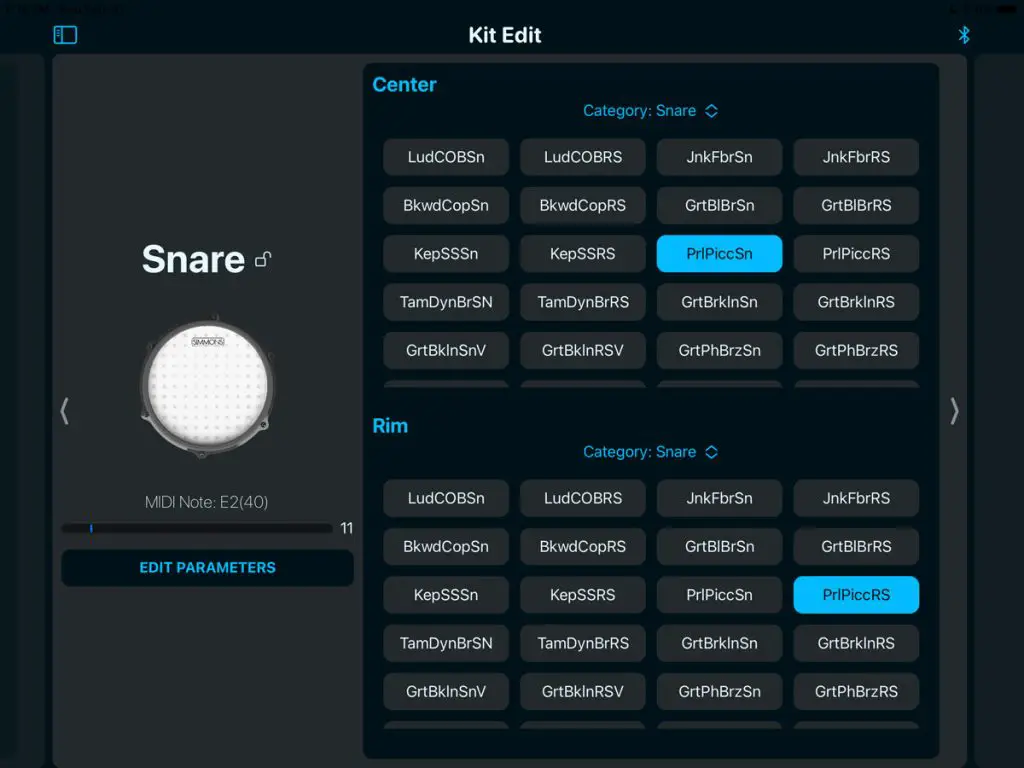
Simmons has an iOS app for editing drum kits
Practice and Coaching Features
Many drum modules include features for practicing and coaching, and this is a very common type of feature even with beginner and budget kits. These types of features usually include things like:
- Showing you how well you’re keeping time with the metronome click
- Ramping up and slowing down tempos while you play
- Changing time signatures while you play
- Dropping out the metronome click periodically while you play
- Built-in songs that you can play and practice along with
These types of features are good to have if you like to have some direction or challenge presented by the drum module to help improve your skills.
At a minimum, drum modules will almost always have at least a metronome built in, which is one of the most common things that drummers use while practicing.
Recording and Audio/MIDI Output Features
If you want to use your electronic drum kit for recording, you’ll want to take a close look at the audio and MIDI output features available in the drum module. There’s a few ways that you can record an electronic drum kit, and each can have it’s own advantages depending on how you want to approach the production process. Here’s the typical options you can find:
- MIDI Output – Sending MIDI signals to a computer and capture the MIDI performance in a DAW. Some drum modules have MIDI outputs and some can send MIDI over USB.
- Stereo Audio Output – Capture the stereo output of the drum module with any recording device that can capture audio signals.
- Multi-track Audio Output – Some modules have individual audio outputs for each pad around the kit, but it’s not very common and is usually found more on pro-level drum modules.
- Stereo Audio Output Over USB – Send stereo audio output directly over USB to a computer for capture withing a DAW.
- Multi-track Audio Output Over USB – Send multi-track audio output, which separates the sounds of your drum kit into individual audio channels for multi-track recording with a DAW.
The MIDI recording option is great if you want to use the sounds from drum VST’s on your computer and bypass the sounds in your drum module. Most drum modules have either a standard MIDI output or can send MIDI over USB.
Multi-track audio over USB is an awesome feature if you want to capture multi-track recordings using the sounds in your drum module. This is something that is becoming more common on intermediate to pro level drum modules, and it can allow you to record and electronic drum kit much in the same way as you would record a fully mic’d up acoustic drum kit. The NUX DM-8 is a good example of an affordable intermediate level drum kit that can send multi-track audio over USB.
Check out our guide on how to record an electronic drum kit for a detailed run-down of possibilities.
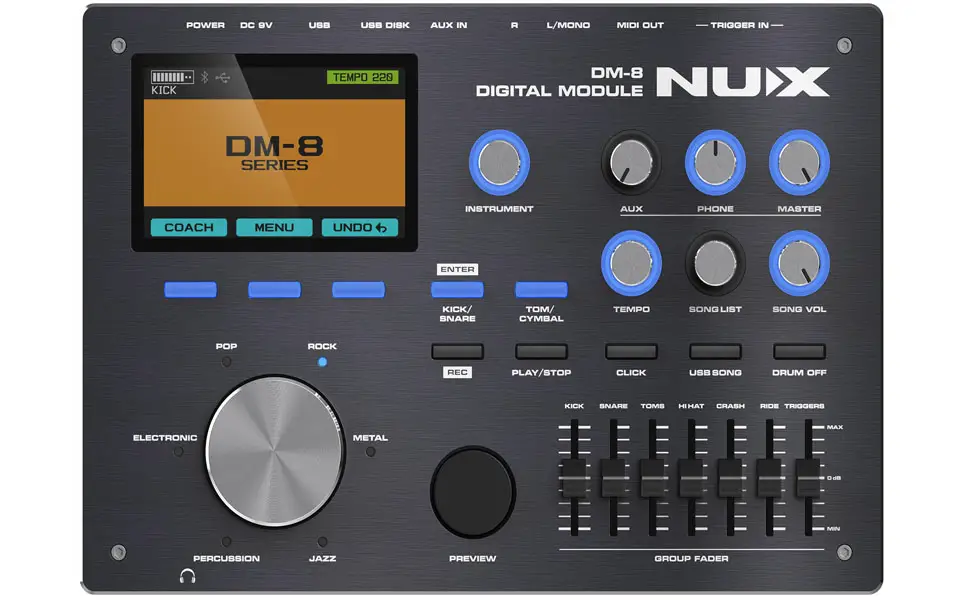
The NUX DM-8 can output multi-channel audio over USB
Pads and Trigger Zones
Now let’s touch on the pads around the kit and how they can differ between kits. You’re going to see a lot of mentions about single-zone, dual-zone or even triple-zone pads. And then there’s also the more advanced digital pads which can blur the lines between multiple zones.
The “zones” are referring to different parts of the pad that you can hit to generate different sounds.
If you see mention of a dual-zone tom pad, for example, that will mean that you can generate different sounds by hitting either the head or the rim of the pad. If you have dual zone tom pads, you can often assign different sounds such as cymbals to rim, which allows you to virtually expand the scope of the kit without adding more cymbal pads.
Another good example is multi zone cymbal pads, such as a triple-zone ride cymbal pad. If a cymbal pad says it has three zone, that usually means that you can hit the edge, the bow and the bell zones on the pad to generate those respective sounds.
Many cymbal pads have their trigger zones only on the portion facing the drummer. But if you see mention of 360 degree zones on cymbal pads, that means that the cymbal can be struck anywhere all the way around the pad surface to generate sounds.
Budget level electronic drum kits will have less zones on their pads and usually feature single-zone pads for just about everything but the snare pad. Intermediate level kits are where you start to find more multi-zone pads around the kit.
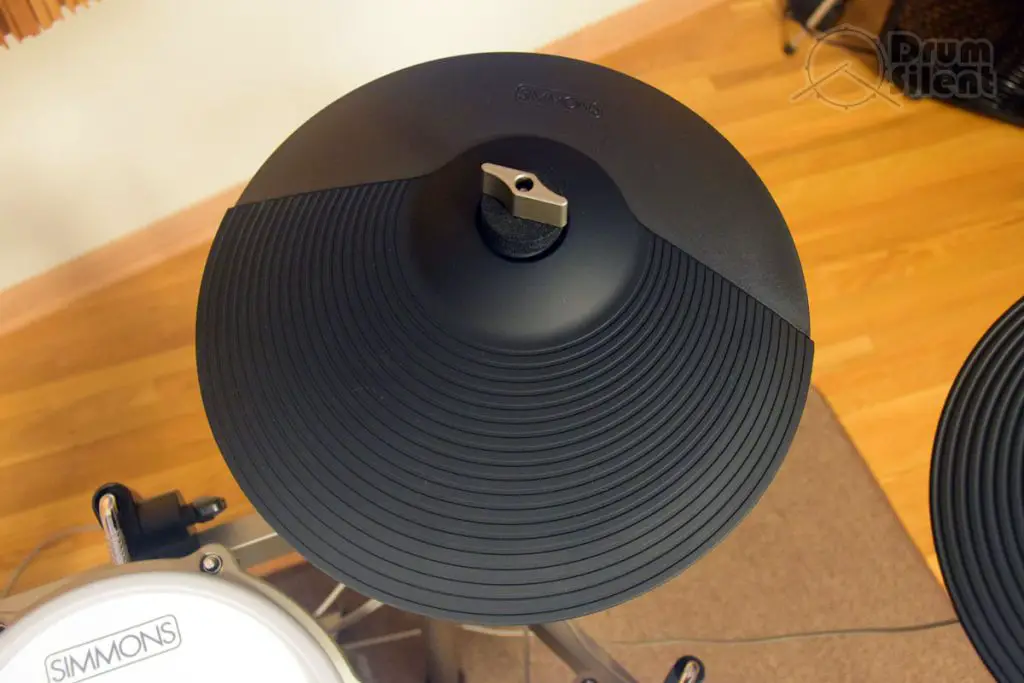
The ride cymbal on the Simmons Titan 70 has edge, bow and bell zones
Mesh Drum Heads
Mesh drum heads have become extremely common on electronic drum kits, they are pretty much the standard, and they can be found even on the cheaper budget kits these days. However not all kits have mesh drum heads. Some drum kits still use rubber drum pads and that’s not necessarily a negative. It mostly just comes down to personal preference and the type of feel you want from your kit.
Mesh heads are popular because they simulate the feel of a mylar drum head more realistically and they are a little more quiet acoustically than rubber drum pads. They can also be tension adjusted so that you can dial in your preferred feel. Two-ply mesh heads are the most common on electronic drum kits, which means there are two layers of mesh on each head. You might also find kits that have either single ply or even triple ply mesh heads. Mesh heads can also be replaced in most cases, so if they get damaged you can replace them like a normal drum head. If you’re trying to keep the noise down while playing drums in an apartment, for example, mesh heads are the way to go.
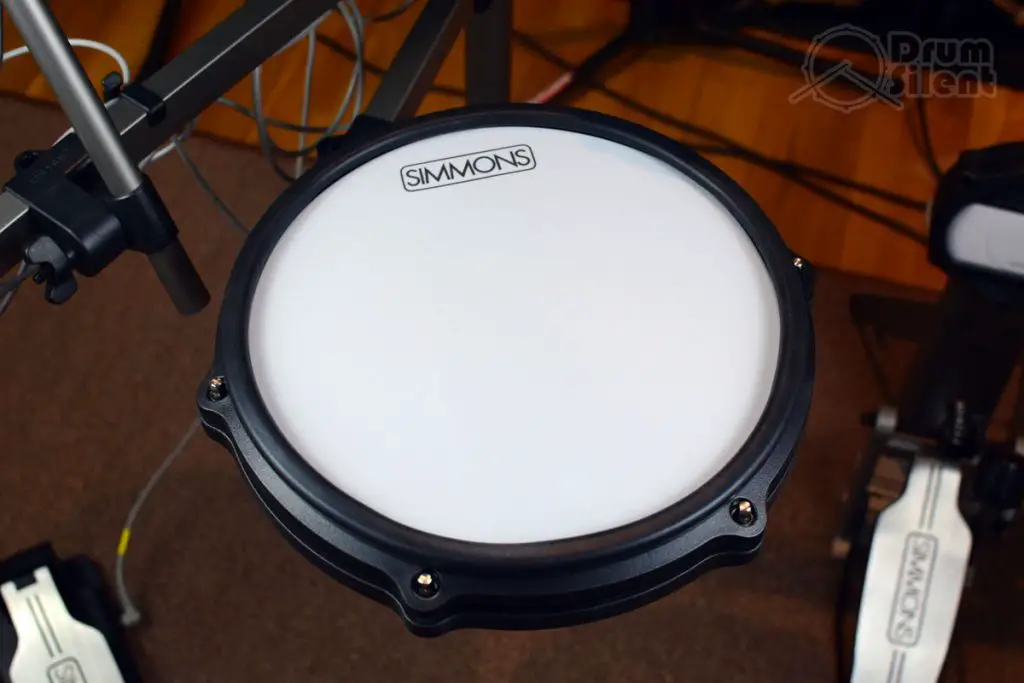
The Simmons Titan 50 has nice mesh pads for a budget kit
Expansion and Upgrade Capabilities
When it comes to expansion and upgrades, not all kits are equal. Usually the budget level kits are going to be the most restrictive in terms of adding more pads or adding more sounds to the drum module. Intermediate to pro level kits are where you are going to find more options for expansion.
I like to look at kit expansion and upgrades as including both hardware and software. Hardware expansion and upgrades would include things like adding another cymbal or tom pad to the kit. Software expansion and upgrades usually will mean the ability to load more drum kits or sounds into the sound module.
Hardware expansion is going to be limited by what the drum module allows. Some drum modules have extra trigger inputs on the back panel for another tom or cymbal pad. Both Simmons and Alesis have budget level kits that can be expanded in this way.
Some drum modules allow you to upgrade and use more advanced, multi-zone pads or even digital pads. Roland is a good example of this, their drum modules usually have a list of supported Roland pads and the more advanced modules can support their more advanced pads. Roland can be a good ecosystem to get into if you want to buy a cheaper kit that you can upgrade over time. For example, you can pick up a kit such as the TD-1DMKX which is a very solid beginner kit with a feature-limited sound module. You can upgrade to a different Roland sound module later on, which will work with all the existing pads on the kit as well as support more advanced Roland pads, and then start to upgrade the pads around the kit after module upgrade.
As far as software expansion goes, many of the newer drum kits allow you to connect to the manufacturers respective online platforms to download and install different drum kits and drum sounds. So if you like to experiment with new drum sounds and don’t want to use drum VST’s on a computer, you might want to keep an eye out for modules with these types of features.
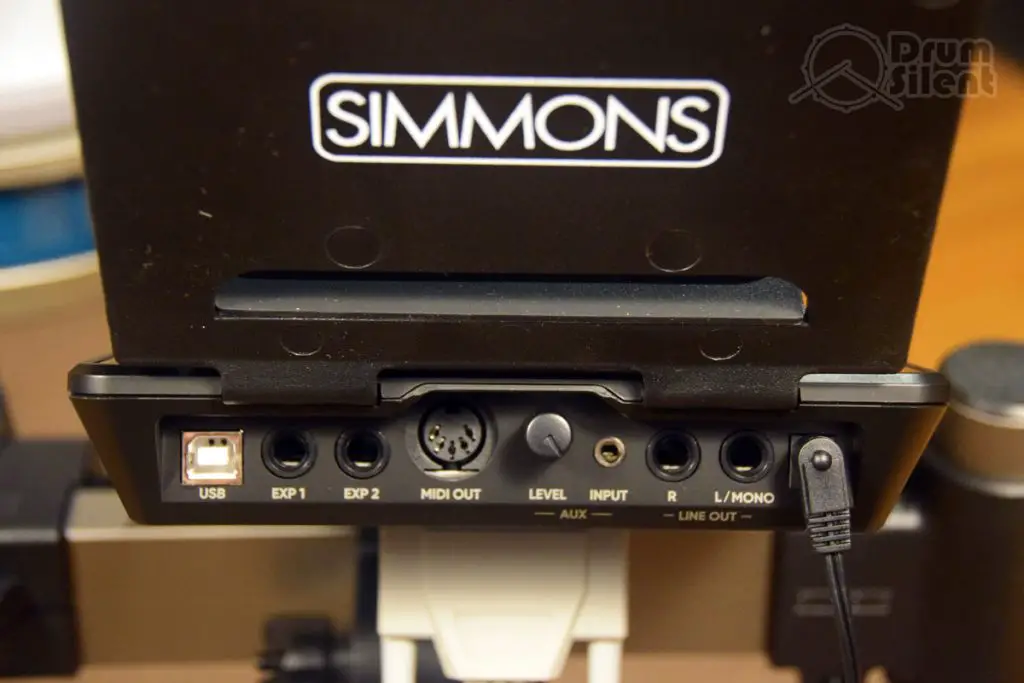
The Simmons Titan 70 has expansion ports on the module
Durability
Many electronic drum kits are quite durable but there’s going to be differences of course when you compare budget level kits to pro or intermediate level kits. The pads are the main thing when it comes to durability, since that’s the part of the kit you are hitting with sticks. Some cheaper kits will have issues with pads wearing out sooner, whether that means the rubber or mesh heads wearing out or the sensors in the pads wearing out and not performing as expected.
Play style can also have a lot to do with durability. If you’re an aggressive player, you can expect electronic drums to wear down just like acoustic drums will. If you have a lighter touch and don’t abuse your electronic drums, they will likely last longer unless there are manufacturer defects.
That being said, more expensive kits are generally going to be more durable. If you start out with a cheaper kit, you should expect to have some pads that wear out more quickly, especially if you play aggressively. However, just like acoustic drums, you can always buy replacement parts for electronic drums. So it’s good to think of electronic drums similarly to how you think of acoustic drums – sometimes stuff just wears out and needs to be replaced if you play a lot.
Stability
The overall stability of an electronic drum kit is tied directly to the quality of the rack and the pad mounting hardware. This is another area where you will find a big difference between budget and intermediate to pro level kits. Many budget kits have lightweight, somewhat wobbly racks. This isn’t always necessarily a bad thing as long as you keep your expectations in check. I’ve noticed that it’s pretty common for the rack on a cheaper kit to feel wobbly when you actually push on the rack and wobble it around, but then you sit down to play it feels more stable.
Rack stability can also be important if you want to expand your kit. I’ve used budget kits that have expansion inputs for an extra tom/cymbal pad but the rack just doesn’t seem large enough or stable enough to support the extra pads. So if you want to expand your kit, try to find one with a more stable rack.
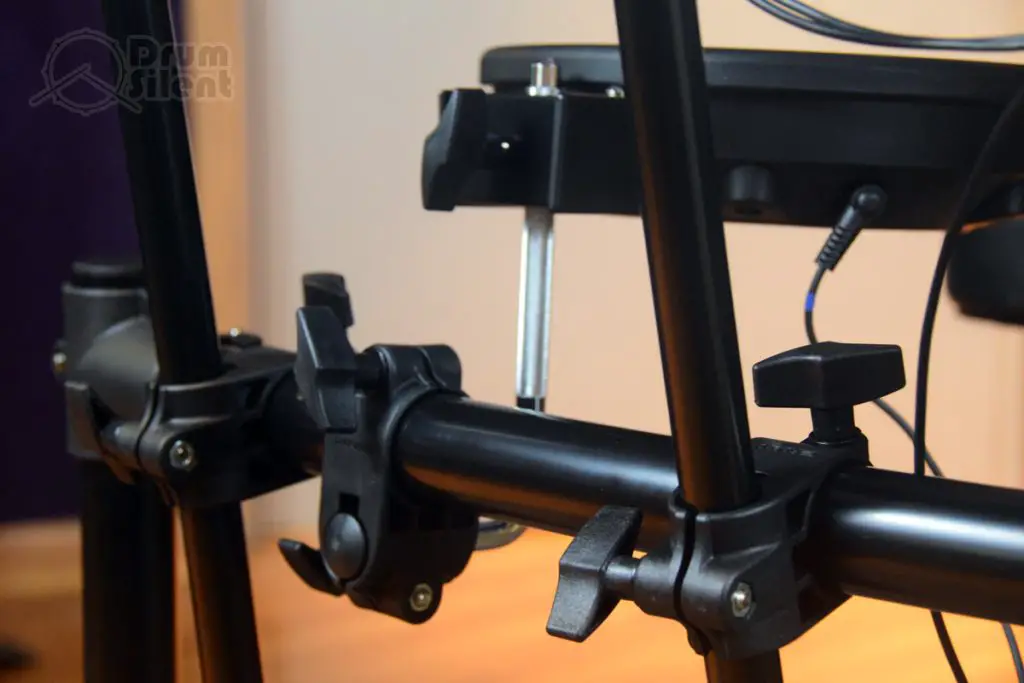
The Roland TD-1DMKX has a very sturdy rack for a budget kit
Portability
Portability is something to consider if you are planning on moving your kit around a lot. Most electronic drum kits are fairly portable simply due to their more compact size. They also can be taken apart easily by removing pads from the rack if that helps to port them around. There are even specialized electronic drum kit bags for hauling electronic kits around if you want to take it a step further.
You probably won’t have much of an issue with the portability of most electronic kits until you start to get into acoustic design electronic drums, which use traditional drum shells and hardware and generally require as much space to transport as an acoustic drum kit.
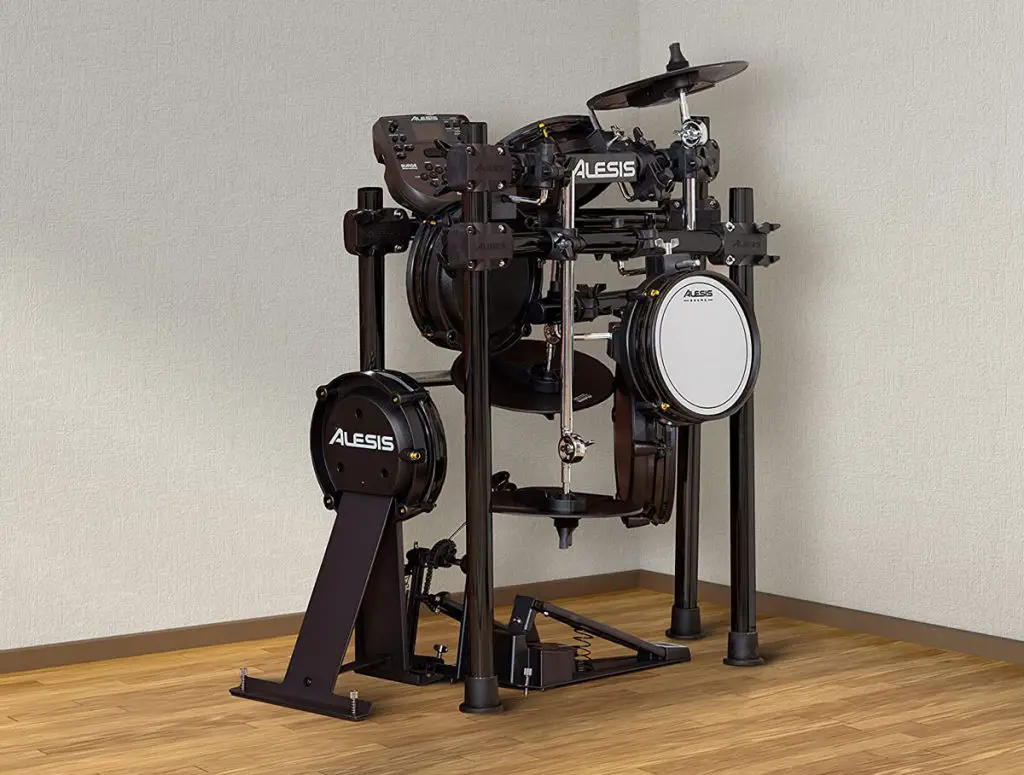
The Alesis Surge Mesh kit folded up for storage
Compatibility with Double Bass Pedals
If you want to play double bass on your electronic kit you’ll want to pay special attention to the type of kick drum pad that comes with the kit, as well as the type of double bass pedal you are using. Not all electronic kits are suitable for double bass. Budget kits are where you’ll usually struggle the most to find a suitable kick pad for double bass, but that’s not always the case.
You’ll want to make sure that the kick drum pad has enough space for two beaters side-by-side, which usually requires a minimum of 5-6 inches of pad width. Your bass drum pedal will also need to be able to clip onto the clip plate of the kick tower effectively, and some kick towers with more narrow plates can be restrictive for some double bass pedals. Pad height is another thing to consider. If you like to keep your beaters set to a lower height you’ll want to find a kick drum pad that offers more vertical placement flexibility.
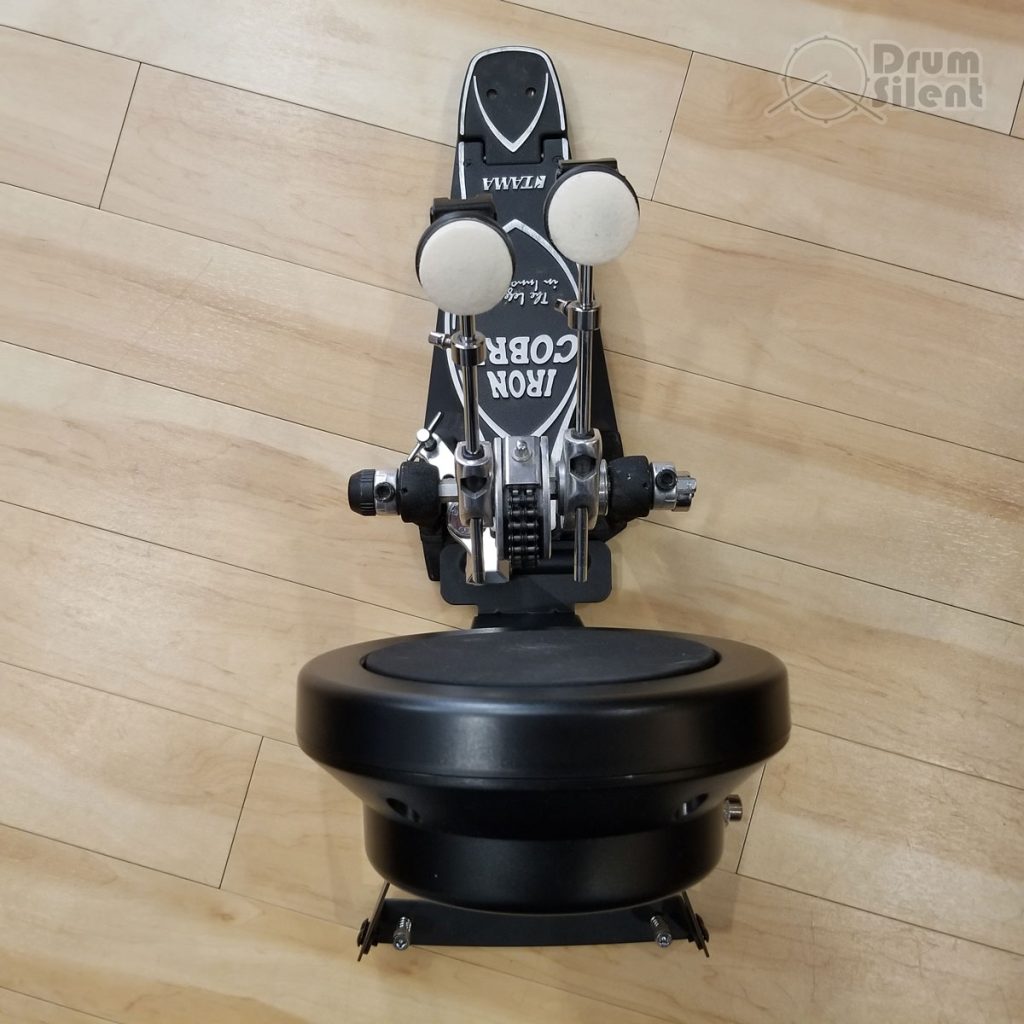
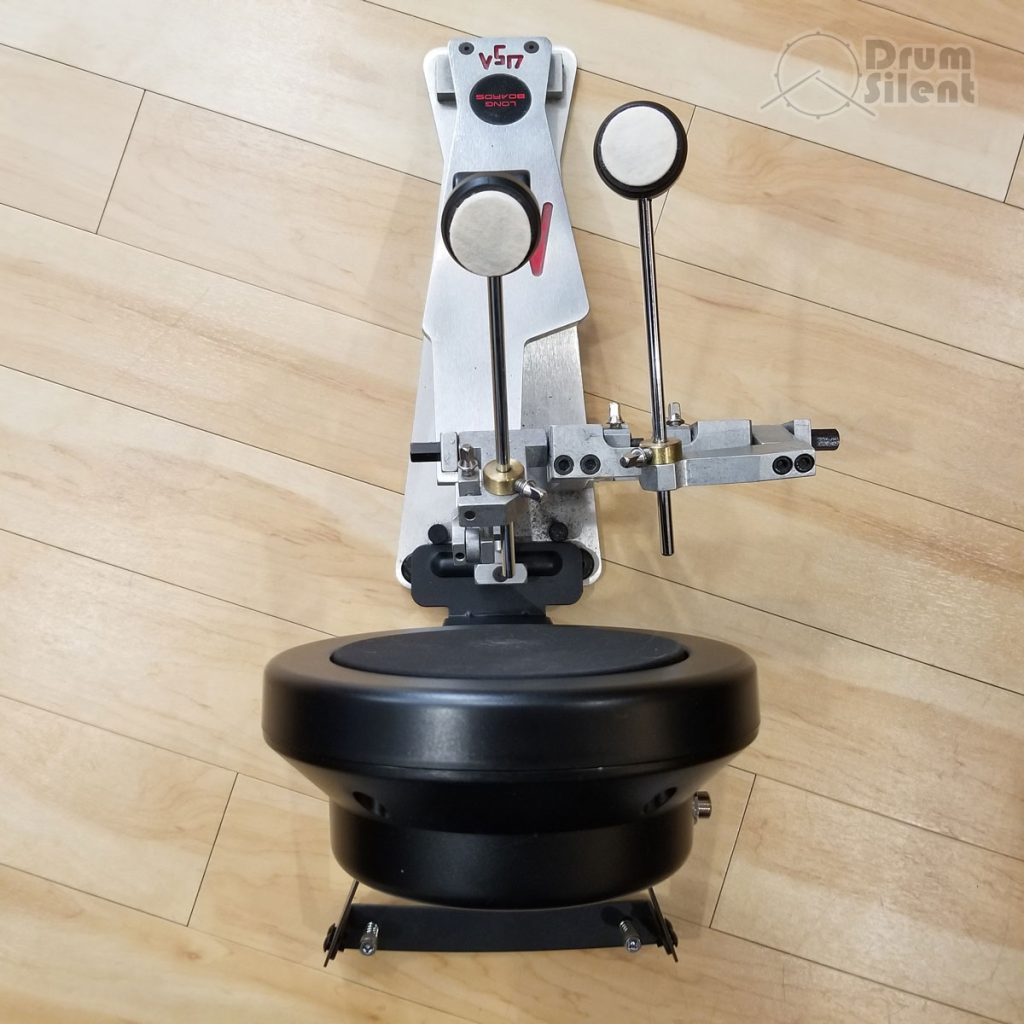
Learn more about using a double bass pedal with electronic drum kits.
Acoustic Design Electronic Drums
When most people think of electronic drums, they think of the typical kit that looks something like this:
However, you can get electronic drums that look the same as acoustic drums, which are usually referred to as acoustic design. These types of drums are fun since they look more like traditional acoustic drums.
Accessories and Extras You Might Need
Electronic drum kits come packaged with plenty of extra in many cases, but very rarely will get everything that you need to sit down and start playing right out of the box. It’s good to take a close look at the accessories included so that you know what will be in the box. Here’s the typical accessories that you might need to pick up along with any electronic drum kit.
- Drum Throne – A comfortable drum throne is essential for a good drumming experience.
- Bass Drum Pedal – Some beginner kits include basic bass drum pedals but in most cases you’ll need to provide your own.
- Drum Sticks – Many kits include a free pair of sticks, but most drummers will want to provide their own, especially if they prefer a specialized size or style.
- Headphones – A good sound pair of headphones are going to be essential for most electronic drummers.
- Drum Rug – A flat, sturdy, low pile rug will keep your kit and pedals from sliding around while you play.
What Now?
Now that you know what to look for, it’s time to start looking at specific drum kits to find one that fits your budget and has the features that you want. We have a some resources available if you are looking for some specific recommendations to get started:

